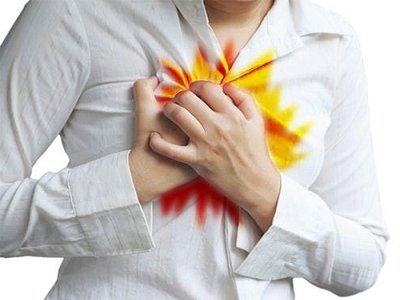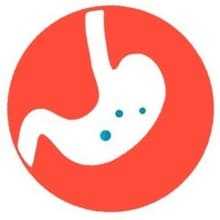Experiencing chest pressure after eating can be a concerning and uncomfortable symptom. It can range from mild discomfort to severe pain, and may be accompanied by other symptoms such as heartburn or difficulty swallowing. Understanding the possible causes of chest pressure after eating is important in order to determine the appropriate course of action.
We will explore the five most common causes of chest pressure after eating and provide insights on how to manage this condition.
Gastroesophageal Reflux Disease (GERD)
Gastroesophageal Reflux Disease, commonly known as GERD, is a condition in which stomach acid flows back into the esophagus, causing discomfort and symptoms like chest pressure.
The backflow of stomach acid irritates the lining of the esophagus, leading to chest pressure or heartburn. This sensation is often worse after eating, as a full stomach can increase the likelihood of acid reflux.
Management and Treatment
Treatment options for GERD include lifestyle changes, medications, and in severe cases, surgery. Managing GERD involves avoiding trigger foods, eating smaller meals, elevating the head while sleeping, and taking medications to reduce acid production.
Gastritis
Gastritis is another common cause of chest pressure after eating. Gastritis refers to inflammation of the stomach lining, which can cause discomfort and pain. Some common symptoms of gastritis include:
- Burning or gnawing pain in the upper abdomen
- Nausea and vomiting
- Loss of appetite
- Bloating and indigestion
- Chest pressure or discomfort
The main causes of gastritis include:
- Infection with Helicobacter pylori bacteria
- Regular use of nonsteroidal anti-inflammatory drugs (NSAIDs)
- Alcohol consumption
- Stress and anxiety
- Autoimmune disorders
Treating Gastritis and Relieving Chest Pressure
The treatment of gastritis usually involves:
- Medications to reduce stomach acid and relieve inflammation
- Antibiotics to treat H. pylori infection, if present
- Avoiding triggers such as NSAIDs and alcohol
- Managing stress through relaxation techniques and therapy
- Making dietary changes such as avoiding spicy or acidic foods
It is essential to consult a healthcare professional for proper diagnosis and treatment of gastritis to relieve chest pressure and other symptoms.
Hiatal Hernia
Hiatal hernia is a common condition that can cause chest pressure after eating. It occurs when a portion of the stomach pushes up through the diaphragm and into the chest cavity. This can lead to symptoms such as chest pain, heartburn, and difficulty swallowing.
A hiatal hernia can cause chest pressure after eating due to the following reasons:
- Reflux: The herniated portion of the stomach can weaken the lower esophageal sphincter (LES), allowing stomach acid to flow back into the esophagus. This can cause irritation and chest pressure.
- Increased Pressure: The presence of the hernia can create an increase in pressure within the chest cavity, leading to symptoms such as chest discomfort and pressure.
Treatment Options for Hiatal Hernia
Treatment for hiatal hernia may include the following:
- Lifestyle Changes: Making dietary modifications, such as avoiding trigger foods and eating smaller, more frequent meals, can help reduce symptoms.
- Medications: Over-the-counter antacids and medications that reduce stomach acid production may be helpful in managing symptoms.
- Surgical Intervention: Severe cases of hiatal hernia may require surgery to repair the hernia and alleviate symptoms.
It is important to consult with a healthcare professional for an accurate diagnosis and appropriate treatment plan for hiatal hernia.
Food Intolerances and Allergies
In some cases, chest pressure after eating can be a symptom of food intolerances or allergies. Certain foods can trigger an immune response in the body, leading to symptoms such as chest pressure, difficulty breathing, and hives. It is essential to identify and manage any intolerances or allergies by working with a healthcare professional or allergist.
Managing Food Intolerances and Allergies
Managing food intolerances and allergies typically involves identifying trigger foods and making dietary changes. The following strategies can help:
- Keeping a food diary to track symptoms and identify trigger foods.
- Gradually eliminating suspected trigger foods from the diet to see if symptoms improve.
- Working with a healthcare professional or allergist to determine food allergies through tests such as skin prick tests or blood tests.
- Making necessary dietary changes, such as avoiding certain foods or finding suitable alternatives.
- Carefully reading food labels to avoid hidden allergens.
- Carrying an epinephrine auto-injector (EpiPen) if diagnosed with severe allergies.
By taking these measures and seeking professional guidance, individuals with food intolerances and allergies can effectively manage their symptoms and minimize the risk of experiencing chest pressure after eating.
Anxiety and Panic Disorders
Anxiety and panic disorders can also contribute to chest pressure after eating. When a person experiences anxiety, their body releases stress hormones that can cause physical symptoms, including chest tightness or pressure. This can be heightened after eating due to the body’s physiological response to stress. It’s important to address and manage anxiety symptoms to alleviate chest pressure after eating.
Coping Strategies for Managing Anxiety Symptoms
- Engaging in regular exercise and physical activity
- Seeking support from a therapist or counselor
- Implementing stress management techniques, such as time management and prioritization
- Engaging in hobbies or activities that bring joy and relaxation
- Avoiding triggers, such as caffeine and alcohol
- Ensuring a balanced and nutritious diet
- Getting enough sleep and practicing good sleep hygiene
Conclusion
If you experience chest pressure after eating, it’s important to seek medical advice and obtain a proper diagnosis. While certain common causes can lead to this discomfort, such as overeating or acid reflux, there can also be underlying medical conditions that require treatment. Consulting with a healthcare professional will provide you with the necessary guidance and treatment options to alleviate your symptoms and ensure your wellbeing. Don’t hesitate to reach out for assistance to address any concerns you may have.
About the Author
Reyus Mammadli is the author of this health blog since 2008. With a background in medical and biotechnical devices, he has over 15 years of experience working with medical literature and expert guidelines from WHO, CDC, Mayo Clinic, and others. His goal is to present clear, accurate health information for everyday readers — not as a substitute for medical advice.







